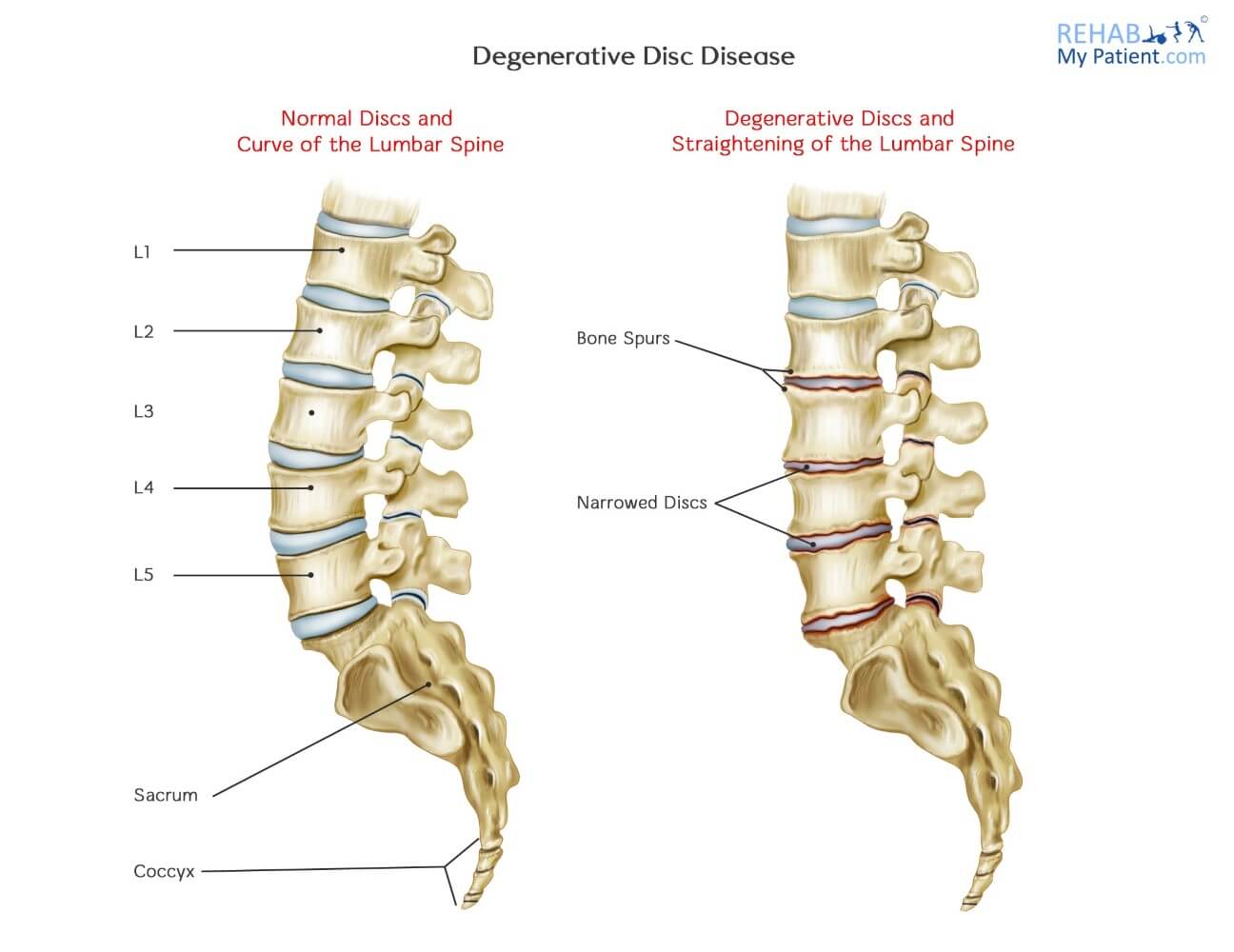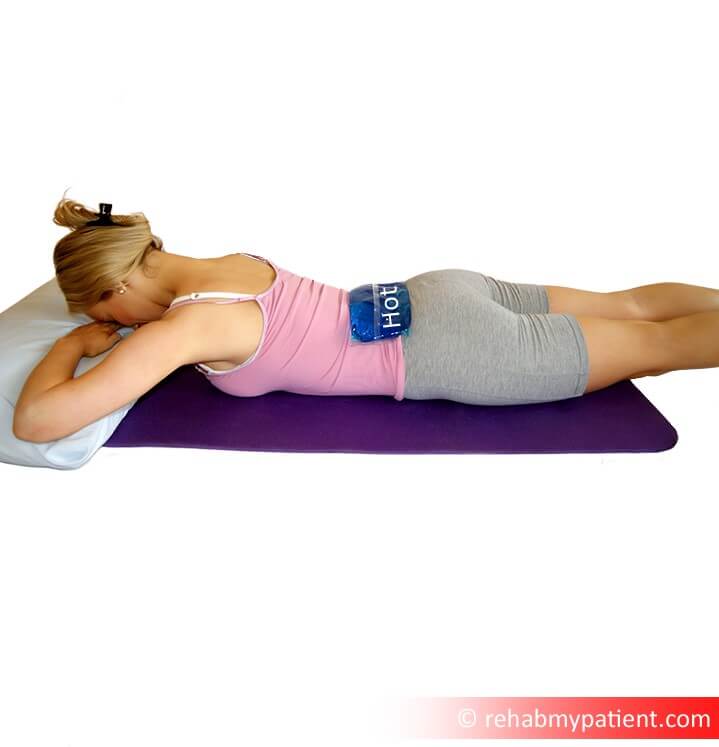Degenerative Disc Disease (DDD)
Posted on 18th Oct 2016 / Published in: Lumbar Spine , Thoracic Spine , Neck

Just about everyone will end up with some type of lower back pain or another throughout their lifetime. Pain can range from mild to severe. It can last for an extended period of time or it can be short-lived. Regardless of how it happens, pain in the lower back can make many of the normal every-day activities that you perform difficult.
It is very normal to suffer with degenerative disc disease. The discs naturally start to degenerate over the age of 25. They are made mostly of water (around 80% of the disc is water), with a tough outer fibrocartilage (known as the annulus). If the disc is placed under strain or stress, gradually the water starts to dehydrate. Dehydration of the disc is the first part of degeneration. If more than one disc dehydrates, this would then be termed as degenerative disc disease. If the discs continue to degenerate, you end up with a disc bulge which is where the downward pressure on the disc bulges the disc outwards. If enough strain is placed on the disc over a long enough period of time, then the disc might slip or prolapse. This too is part of degenerative disc disease.
Causes of Degenerative Disc Disease:
- Hereditary/Genetic: weakness in the annulus of the disc can run in families, so if your parents have degenerative disc disease you would be more likely to get it too.
- Wear and Tear: years of small amounts of stress to the disc can cause degeneration.
- Poor posture: constant forward bending of putting the back in a compromised position can increase the pressure on the discs making degeneration more likely.
- Poor nutrition and dehydration: eating a poor diet can reduce the strength of the ligaments and fibres of the disc.
Degenerative Disc Disease Anatomy
Your spine is composed of multiple bones (vertebrae), which are all stacked on top of each other. Ligaments, muscles, intervertebral discs and nerves are all additional components of your spine. Vertebrae are all of the bones that connect to create a canal protecting the spinal cord. Three columns make up the spinal column: the chest (thoracic), curves in the neck (cervical) and the lower back (lumbar). The lower part of the spine is composed of the vertebrae fused together.
In between each vertebra is a disc. It is made up of a soft inner part called the nucleus, and a harder outer part called the annulus. The inner part is mostly made up of water, and so the disc is full of water. When the disc starts to degenerate, the inner part dehydrates and the disc loses water. Small cracks can appear in the outer part of the disc, and the disc material can prolapse through these cracks, known as a slipped disc (or disc prolapse).
The nerves (electrical cables) travel through the spinal canal and send messages from the brain to the muscles. They branch away from the spinal cord from the openings along the vertebrae. Ligaments and muscles provide the body with stability and support for the upper body and the spine. Strong ligaments work to connect the vertebrae and make sure the spinal column stays in proper position.

How to Treat Degenerative Disc Disease:
- Medication and/or Heat Therapy
Acetaminophen and aspiring can help to alleviate pain without a bunch of unnecessary side effects. A non-steroid anti-inflammatory medication like naproxen and ibuprofen helps to reduce pain and minimize swelling. Narcotics, like morphine and codeine, can help with the pain and swelling you are dealing with. Steroids, regardless of whether they are injected into the spine or taken orally, deliver a high dosage of anti-inflammatory medication to the injured site. However, these should only be taken short term when the pain is at its worst. An alternative would be using heat therapy. A hot pack will give the back comfort and help to sooth the pain. The heat may also help with mobility. Ask your therapist how long to use the heat pack for.
- Physical Therapy
Physical therapy entails modalities like massage, heat, ice, electrical stimulation and ultrasound. Active therapy involves weight lifting, stretching and cardiovascular exercises. Using exercise will help to restore strength and motion to the lower back and relieve pain. Therapy is probably the most effective way to relieve pressure on the spine or back ache as a result of DDD.

- Braces
Braces tend to be used quite often. The most common form of brace used is that of a corset-type unit that wraps around the stomach and back. Even though they might always be helpful, there are some that report feeling more stable and comfortable when wearing them. Short term use is more recommended, especially for lifting heavy items.
- Chiropractic, Osteopathy and Acupuncture
Many different forms of this therapy exist. Some patients find relief from this type of pain by using these treatments. All have proven to help reduce back pain.
- Traction
Even though this form of treatment is used, there is scientific evidence supporting its effectiveness and home traction devices can be used such as traction tables, or inversion tables, or you can have manual traction from a therapist, or some clinics offer traction machines which will traction the spine.
Tips:
- Combining aerobic exercise with a specific type of exercises will help to keep your back muscles flexible and strong.
- Make sure to lift heavy objects using the legs and not the back.
- Maintaining a healthy weight will help to alleviate added stress on the lower back.
- Smoke and nicotine can all cause your spine to age a lot quicker than normal.
- Good posture will help to prevent problems down the line with your back.
- Reduce forward bending.
Sign UP
Sign up for your free trial now!
Get started with Rehab My Patient today and revolutionize your exercise prescription process for effective rehabilitation.
Start Your 14-Day Free Trial